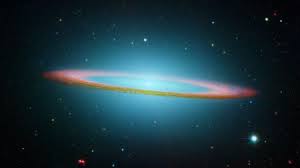China Successfully Tested New Carrier Rocket
- China has successfully tested the power system of the fifth-generation Long March-5, a fifth generation carrier rocket as on July 24, 2015. The rocket scheduled for flight in 2016 carrying a payload capacity of 25 tonnes to low Earth orbits, or 14 tonnes to geostationary transfer orbit, about twice the current capacity.
- The rocket will serve the final chapter of China’s three-step i.e., orbiting, landing and returning lunar program and the building of manned space stations.
- With this the Long March rocket family has completed more than 200 missions since 1970, when a Long March-1 rocket sent China’s first satellite, Dong Fang Hong 1, or ‘the East is Red’, into Earth’s orbit.
India Earned $ 100 Million by Launching 45 Foreign Satellites
- India has earned about $ 100 million by launching 45 foreign satellites from 19 countries. It is known from the details of revenue earned by Antrix, the commercial arm of the Indian Space Research Organisation (ISRO) provided in the Lok Sabha on July 22, 2015.
- Its revenue from its commercial space missions is poised to grow with another 28 foreign satellites of six countries. They are Algeria, Canada, Germany, Indonesia, Singapore and the USA. The satellites planned to be put into the orbit between 2015 and 2017.
- Government of India has also sanctioned 15 small Polar satellite launch vehicles (PSLV) launchers worth Rs 3090 crore which would be built during 2017-2020.
Read Also – Economy and Banking Current Affairs August 2015 Part 5.
ISRO Successfully Test-fired GSLV-Mark III
- Indian Space Research Organisation (ISRO) successfully test-fired Geosynchronous Satellite Launch Vehicle (GSLV) Mark III on ground CE-20 at the ISRO Propulsion Complex at Mahendragiri in southern Tamil Nadu on July 20,2015.
- India’s GSLV-Mark III project, the first indigenous high-thrust cryogenic rocket engine aimed at carrying 19 tonnes and will be capable of carrying satellites that weigh up to four tonnes, including future manned missions. On April 28, 2015, ISRO did the first full-duration ground test of the engine.
- The first flight of a GSLV with the indigenous CE-7.5 cryogenic engine on December 25, 2010 was a failure, but on January 5, 2014 GSLV-D5 (Mk II) used the engine to successfully put in orbit communication satellite GSAT-14 which weighed 1982 kg. GSLV-Mk III is expected to make its first flight by the end of 2016.
Satellite-based Navigation System ‘GAGAN’ Launched
- The GPS-Aided Geo Augmented Navigation (GAGAN) system launched by the Ministry of Civil Aviation on July 13, 2015. It will offer seamless navigation to the aviation industry and would immediately benefit nearly 50 airports in India.
- The system is developed by the Indian Space Research Organisation (ISRO) and the Airports Authority of India (AAI). With this India became the fourth country to offer space-based satellite navigation services to the aviation sector.
- The system would be available for the member States of the South Asian Association for Regional Cooperation (SAARC).
- The system also bridges the gap in the coverage areas of the European Union’s European Geostationary Navigation Ovelay Service (EGNOS) and Japan’s Multi-functional Satellite Augmentation System (MSAS).
ISRO Successfully Launched PSLV-C28 Carrying 5 UK Satellites
- India launched its heaviest commercial space mission ever with its polar rocket successfully putting five British satellites into the sun synchronous orbit after a flawless takeoff on July 10, 2015 from the Satish Dhawan Space Centre, Sriharikota, Andhra Pradesh.
- All of the five satellites belongs to United Kingdom (UK) Surrey Satellite Technology Limited (SSTL). They were launched as part commercial launch arrangement between SSTL and ANTRIX corporation, the commercial arm of ISRO.
- Polar Satellite Launch Vehicle PSLV-C28—a PSLV-XL version is made by Indian Space Research Organisation (ISRO). It is 44.4 m tall.
- The overall mass of five satellites being placed into the intended orbit is about 1440 kg.
We hope you like Space Current Affairs August 2015, give your feedback in comments and keep visiting current affairs.




